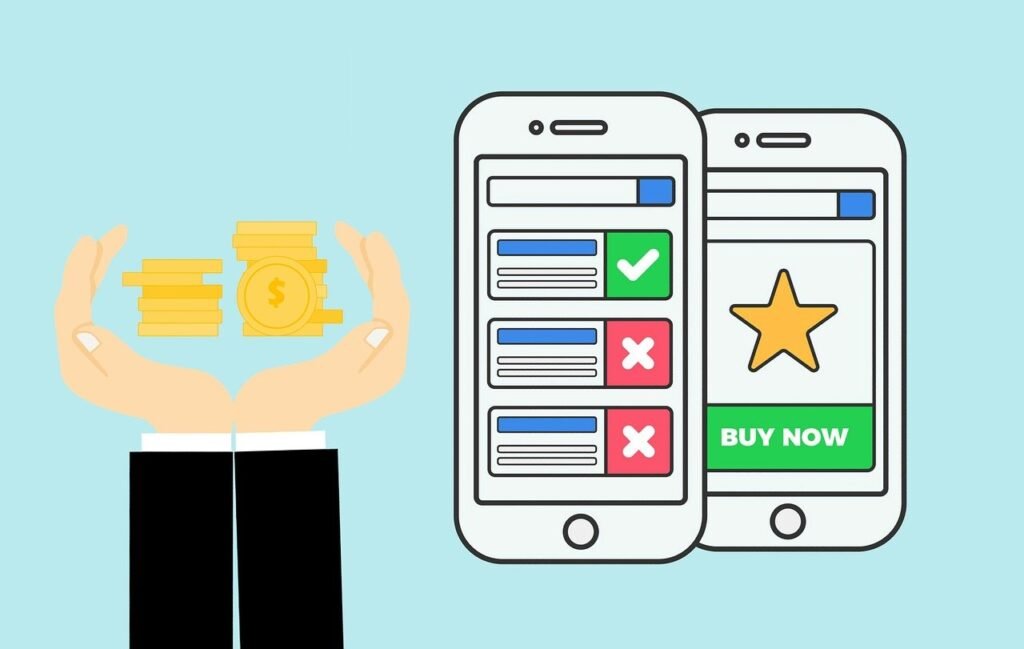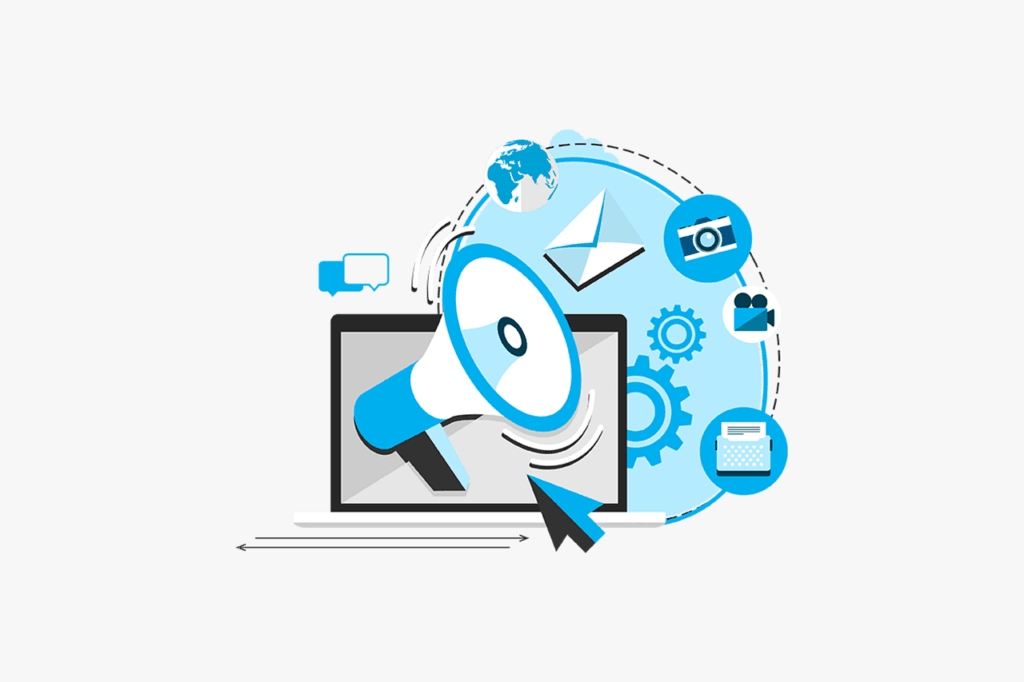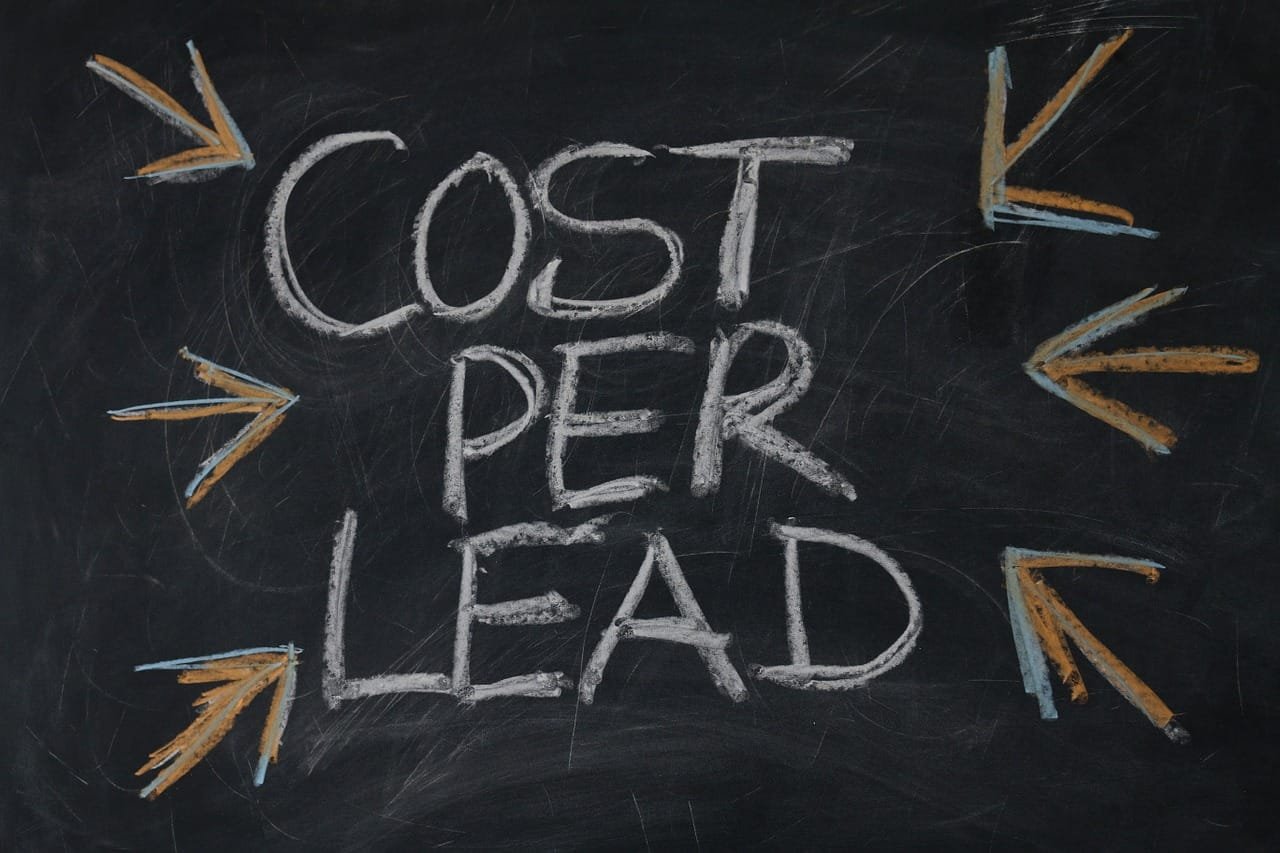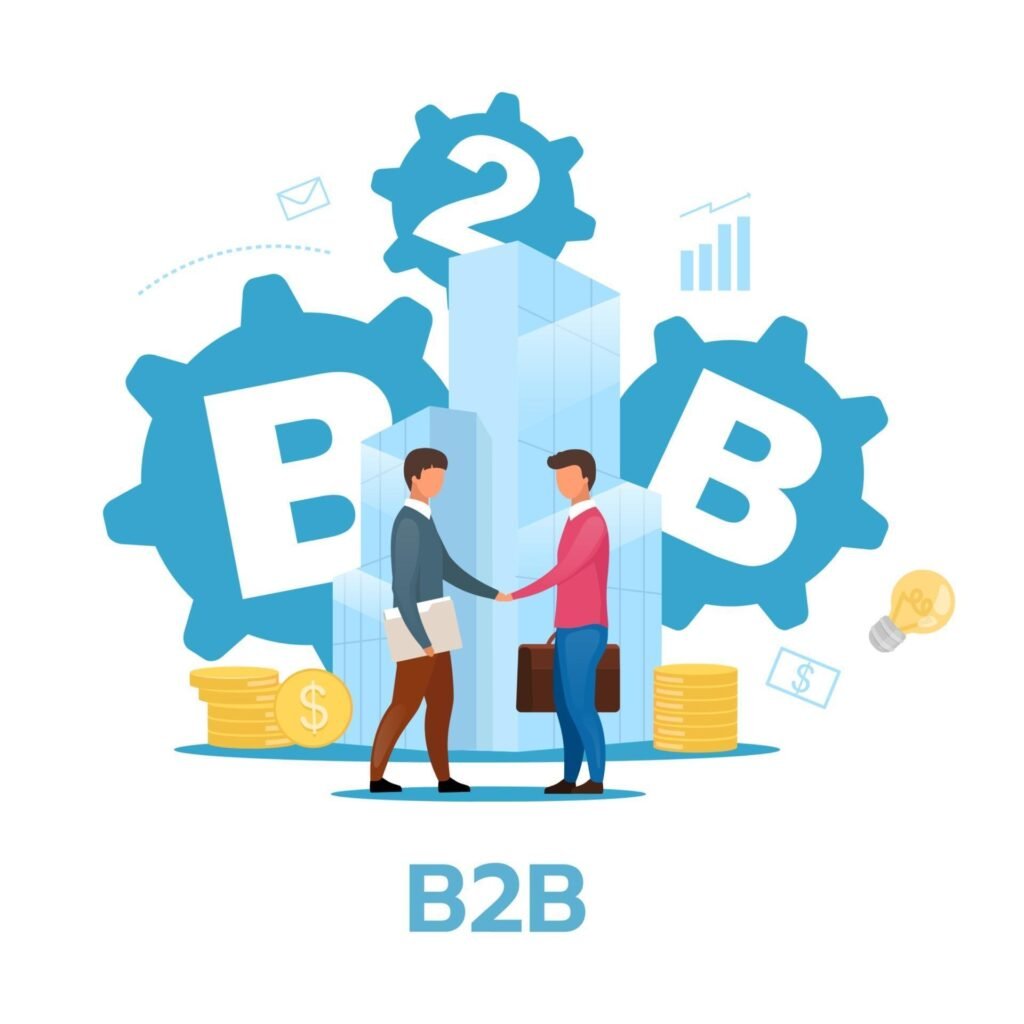- 1. How Effective Are PPC Ads in Boosting Brand Awareness?
- 2. What Is the ROI of Google Ads?
- 3. Why Do Users Click on Paid Ads?
- 4. How Do Search Ads Impact Brand Awareness?
- 5. What Is the Average Click-Through Rate (CTR) for PPC Ads?
- 6. How Broad Is the Reach of Google's Display Ads?
- 7. What Percentage of Paid Search Clicks Come from Mobile Devices?
- 8. What Is the Conversion Rate for Google Ads?
- 9. How Do Top Paid Ads Perform?
- 10. How Do Users Perceive Paid Search Ads?
- 11. How Likely Are Users to Purchase from Paid Ads?
- 12. Are Marketers Increasing Their PPC Budgets?
- 13. What Is the Average Cost-Per-Click (CPC) in Google Ads?
- 14. How Effective Are Local PPC Campaigns?
- 15. What Is the Average Cost-Per-Action (CPA) for Google Ads?
- 16. How Effective Are Remarketing Ads?
- 17. What Is the CTR for Video Ads?
- 18. What Is the Conversion Rate for Display Ads?
- 19. How Broad Is the Reach of AdWords Campaigns on the Display Network?
- 20. How Do Ad Extensions Affect Click-Through Rates?
- 21. Why Do People Click on Paid Search Ads?
- 22. How Do Paid Ads Impact Branded Keywords?
- 23. How Do Google Shopping Ads Compare to Text Ads?
- 24. How Effective Is PPC for Lead Generation?
- 25. Which Industry Has the Highest Average CPC in Google Ads?
- 26. What Is the Expected Social Media Ad Spending in 2024?
- 27. How Dominant Is Google in the Paid Search Market?
- 28. What Is the Average Conversion Rate for the Travel and Hospitality Industry in Google Ads?
- 29. How Do Marketers Use PPC to Drive Brand Awareness and Lead Generation?
- 30. What Are the Benefits of Ad Extensions?
- We got all the latest Marketing Stats here:
Pay-per-click (PPC) advertising remains one of the most effective digital marketing strategies. By paying for each click on your ads, you can drive targeted traffic to your website and achieve your business goals more efficiently. However, the PPC landscape is continually evolving, influenced by changes in technology, consumer behavior, and market dynamics. To stay ahead, you need to understand the latest statistics and trends that will shape PPC marketing in 2024.
In this article, we will delve into 30 key PPC marketing statistics that provide valuable insights into current trends and help you make data-driven decisions. From understanding the impact of mobile devices to leveraging video ads and remarketing, these statistics will guide you in optimizing your PPC campaigns for better performance.
1. How Effective Are PPC Ads in Boosting Brand Awareness?

PPC ads can boost brand awareness by up to 80%.
PPC ads are incredibly effective at increasing brand awareness. By appearing at the top of search engine results pages and across various online platforms, PPC ads ensure your brand is seen by a large audience.
This visibility is essential for building brand recognition and credibility, especially for new businesses or when launching new products. To maximize brand awareness through PPC, focus on creating compelling ad copy and using visually appealing display ads.
2. What Is the ROI of Google Ads?
Businesses earn an average of $2 in revenue for every $1 spent on Google Ads.
Google Ads delivers a strong return on investment (ROI), with businesses earning an average of $2 for every $1 spent. This impressive ROI underscores the efficiency of PPC advertising in driving revenue.
To achieve a high ROI, optimize your ad targeting, use relevant keywords, and continuously test and refine your ad campaigns. Tracking and analyzing performance metrics will help you make data-driven adjustments to maximize your returns.
3. Why Do Users Click on Paid Ads?
65% of all clicks made by users who intend to make a purchase go to paid ads.
Paid ads are highly effective at capturing the attention of users who are ready to make a purchase. This statistic highlights the importance of PPC in targeting high-intent consumers.
To leverage this, ensure your ads are highly relevant to the search queries and include strong calls-to-action that encourage clicks. Additionally, using ad extensions like site links and call buttons can make your ads more attractive and clickable.
4. How Do Search Ads Impact Brand Awareness?
Search ads can increase brand awareness by 46%.
Search ads significantly boost brand awareness, increasing it by 46%. This makes PPC a valuable tool for brands looking to establish or reinforce their presence in the market.
By appearing at the top of search results, your brand gains visibility and credibility. Focus on optimizing your ad copy and keywords to ensure your ads are relevant and compelling, thereby maximizing the impact on brand awareness.
5. What Is the Average Click-Through Rate (CTR) for PPC Ads?
The average click-through rate (CTR) for PPC ads across all industries is 3.17%.
The average CTR for PPC ads is 3.17%, serving as a benchmark for evaluating your campaigns. To improve your CTR, create engaging and relevant ad copy, use high-quality visuals, and ensure your ads are targeted to the right audience.
Regularly testing different ad variations through A/B testing can help identify what resonates best with your audience, leading to higher click-through rates.
6. How Broad Is the Reach of Google’s Display Ads?
Google’s display ads reach over 90% of global internet users.
Google’s display ads have an extensive reach, covering over 90% of global internet users. This vast reach makes display ads an excellent choice for brands looking to increase visibility and engage a broad audience.
To make the most of display advertising, use eye-catching visuals and compelling messages that capture attention and drive engagement. Targeting options like demographic and interest targeting can help you reach the most relevant audience segments.
7. What Percentage of Paid Search Clicks Come from Mobile Devices?
Mobile devices account for 53% of paid search clicks.
With mobile devices accounting for 53% of paid search clicks, optimizing your PPC campaigns for mobile is crucial. Ensure your ads are mobile-friendly, with easy-to-read text, fast-loading pages, and clear calls-to-action.
Additionally, consider using mobile-specific ad formats and extensions to enhance the user experience and drive more clicks from mobile users.
8. What Is the Conversion Rate for Google Ads?
The average conversion rate across all industries for Google Ads is 4.40%.
The average conversion rate for Google Ads is 4.40%, indicating the effectiveness of PPC in driving actions that lead to sales or other valuable outcomes. To improve your conversion rates, focus on creating highly relevant ads and landing pages that align with user intent.
A/B testing different ad elements, such as headlines and CTAs, can help identify the most effective combinations for driving conversions.
9. How Do Top Paid Ads Perform?
41% of clicks go to the top three paid ads on the search results page.
The top three paid ads on search results pages capture 41% of all clicks, emphasizing the importance of securing these prime positions. To achieve this, bid competitively and ensure your ads are highly relevant and of high quality.
Using ad extensions and optimizing your Quality Score can also help improve your ad rankings, increasing the likelihood of appearing in these top spots.
10. How Do Users Perceive Paid Search Ads?

75% of users say paid search ads make it easier to find the information they need.
Paid search ads are perceived positively by users, with 75% agreeing that these ads help them find the information they need more easily.
This positive perception reinforces the value of PPC advertising in providing useful and relevant content to users. To maintain this perception, ensure your ads are accurate, informative, and directly related to the search queries they target.
11. How Likely Are Users to Purchase from Paid Ads?
50% of users arriving at a retailer’s site from paid ads are more likely to purchase than those who come from an organic link.
Users who arrive at a retailer’s site via paid ads are 50% more likely to make a purchase compared to those who come through organic links. This statistic highlights the effectiveness of PPC in driving high-intent traffic.
To capitalize on this, ensure your landing pages are optimized for conversions with clear calls-to-action, easy navigation, and compelling offers that encourage immediate purchases.
12. Are Marketers Increasing Their PPC Budgets?
62% of marketers plan to increase their PPC budgets in the next 12 months.
With the proven effectiveness of PPC, 62% of marketers are planning to increase their PPC budgets. This indicates growing confidence in the ROI of PPC advertising.
To make the most of increased budgets, focus on scaling successful campaigns, exploring new ad formats, and continuously optimizing your ad performance through testing and analysis.
13. What Is the Average Cost-Per-Click (CPC) in Google Ads?
The average cost-per-click (CPC) in Google Ads across all industries is $2.69.
The average CPC in Google Ads is $2.69, providing a benchmark for budgeting and evaluating the cost-effectiveness of your campaigns.
To manage your CPC effectively, use targeted keywords, optimize your Quality Score, and employ bid strategies that align with your campaign goals. Monitoring and adjusting your bids based on performance data can help you achieve better results within your budget.
14. How Effective Are Local PPC Campaigns?
Local businesses receive 1 in 3 clicks through their paid search campaigns.
Local businesses benefit significantly from PPC, receiving one in three clicks through their paid search campaigns. This statistic underscores the importance of PPC for local marketing efforts.
To maximize local PPC effectiveness, use location targeting, include local keywords, and highlight location-specific offers or services in your ad copy. Ensuring your ads appear in local search results can drive more foot traffic and local business.
15. What Is the Average Cost-Per-Action (CPA) for Google Ads?
The average cost-per-action (CPA) for Google Ads across all industries is $48.96.
The average CPA in Google Ads is $48.96, providing insight into the cost of driving specific actions, such as purchases or sign-ups. To optimize your CPA, focus on improving your ad relevance and landing page experience.
Using conversion tracking and advanced bidding strategies can help you lower your CPA while achieving your desired outcomes.

16. How Effective Are Remarketing Ads?
Remarketing ads are 76% more likely to be clicked than regular display ads.
Remarketing ads, which target users who have previously visited your site, are 76% more likely to be clicked than regular display ads. This high click-through rate highlights the effectiveness of staying engaged with potential customers who have already shown interest in your products or services.
To leverage remarketing, create tailored ads that address the interests and behaviors of returning visitors, encouraging them to complete their purchase.
17. What Is the CTR for Video Ads?
Video ads have an average CTR of 1.84%, which is the highest of all digital ad formats.
Video ads boast the highest CTR among digital ad formats, with an average of 1.84%. This makes video a powerful medium for capturing audience attention and driving engagement.
To maximize the impact of video ads, create high-quality, engaging content that resonates with your target audience. Incorporating strong calls-to-action within your videos can further boost CTR and conversions.
18. What Is the Conversion Rate for Display Ads?
Display ads have a conversion rate of 0.77% across all industries.
Display ads achieve an average conversion rate of 0.77%. While this rate is lower compared to search ads, display ads are valuable for building brand awareness and retargeting.
To improve conversion rates for display ads, focus on targeting the right audience segments and creating visually appealing ads with clear, compelling messages. Using remarketing and lookalike audiences can also enhance the effectiveness of your display campaigns.
19. How Broad Is the Reach of AdWords Campaigns on the Display Network?
AdWords campaigns on the Display Network reach 90% of internet users worldwide.
AdWords campaigns on the Display Network have a global reach, covering 90% of internet users. This extensive reach provides an excellent opportunity for brands to increase visibility and engage with a wide audience.
To make the most of this reach, use targeting options such as demographics, interests, and placements to ensure your ads are seen by the most relevant audiences.
20. How Do Ad Extensions Affect Click-Through Rates?

Ad extensions increase click-through rates by 10-15%.
Ad extensions, such as sitelinks, callouts, and structured snippets, can significantly enhance your ads, increasing click-through rates by 10-15%.
These extensions provide additional information and options for users, making your ads more informative and attractive. To utilize ad extensions effectively, choose the ones that best complement your ad content and provide value to your audience.
21. Why Do People Click on Paid Search Ads?
33% of people click on a paid search ad because it directly answers their search query.
One-third of users click on paid search ads because they find them directly relevant to their search queries. This highlights the importance of aligning your ad copy with user intent.
To capture these clicks, ensure that your ads are highly relevant, clearly answering the questions or needs expressed in the search queries. Using exact match keywords and crafting precise, engaging ad copy can help achieve this alignment.
22. How Do Paid Ads Impact Branded Keywords?
Paid ads lead to an 11.38% increase in click-through rate for branded keywords.
Paid ads significantly enhance the performance of branded keywords, resulting in an 11.38% increase in click-through rate. This statistic underscores the importance of bidding on your own branded terms to capture more clicks and maintain a competitive edge.
By securing the top ad spots for your brand keywords, you can effectively control the narrative and ensure users find the most relevant and official information about your brand.
23. How Do Google Shopping Ads Compare to Text Ads?
Google Shopping ads have a 30% higher conversion rate compared to text ads.
Google Shopping ads outperform text ads in terms of conversion rates, achieving 30% higher conversions. These visually-rich ads showcase product images, prices, and reviews, providing a more engaging shopping experience.
To maximize the effectiveness of Google Shopping ads, ensure your product data is accurate and up-to-date, and optimize your product titles and descriptions for relevant keywords.
24. How Effective Is PPC for Lead Generation?
44% of marketers consider PPC one of the most effective lead generation channels.
Nearly half of marketers view PPC as one of the most effective channels for generating leads. This statistic highlights the power of PPC in driving qualified traffic and capturing potential customers’ information.
To optimize PPC for lead generation, use targeted landing pages with clear calls-to-action, offer valuable incentives for lead capture, and utilize lead tracking to measure and improve your campaigns.
25. Which Industry Has the Highest Average CPC in Google Ads?
The financial services industry has the highest average CPC in Google Ads at $5.88.
The financial services industry faces the highest average cost-per-click (CPC) at $5.88. This higher CPC reflects the competitive nature of the industry, where businesses are willing to pay more for valuable clicks.
To manage high CPCs, focus on improving your Quality Score by creating highly relevant ads and landing pages, and consider using long-tail keywords to reduce costs while maintaining targeting precision.
26. What Is the Expected Social Media Ad Spending in 2024?

Social media ad spending is expected to reach over $105 billion in 2024.
Social media ad spending is projected to surpass $105 billion in 2024, reflecting the growing importance of social platforms in digital marketing strategies.
To capitalize on this trend, allocate a portion of your PPC budget to social media ads, leveraging the targeting capabilities and diverse ad formats available on platforms like Facebook, Instagram, and LinkedIn. Crafting engaging and visually appealing social media ads can drive significant traffic and conversions.
27. How Dominant Is Google in the Paid Search Market?
Google owns 73% of the paid search market.
Google’s dominance in the paid search market is evident, holding a 73% market share. This dominance makes Google Ads a crucial component of any PPC strategy.
To succeed on Google, focus on optimizing your campaigns with relevant keywords, high-quality ad copy, and effective bidding strategies. Regularly monitoring and adjusting your campaigns based on performance data will help you stay competitive in this dominant platform.
28. What Is the Average Conversion Rate for the Travel and Hospitality Industry in Google Ads?
The travel and hospitality industry has an average conversion rate of 3.55% for Google Ads.
The travel and hospitality industry achieves an average conversion rate of 3.55% in Google Ads, highlighting the effectiveness of PPC in this sector.
To maximize conversions, create compelling ad copy that highlights unique selling points, such as special offers or exclusive experiences. Ensuring your landing pages provide a seamless booking experience can further enhance conversion rates.
29. How Do Marketers Use PPC to Drive Brand Awareness and Lead Generation?
66% of marketers use PPC to drive brand awareness and lead generation.
Two-thirds of marketers use PPC not just for direct sales but also for driving brand awareness and generating leads. This dual approach underscores the versatility of PPC advertising. To effectively use PPC for these purposes, combine display and search ads to cover both visibility and targeted lead capture.
Crafting ads that emphasize brand values and offering lead magnets, like free trials or downloadable resources, can help achieve these goals.
30. What Are the Benefits of Ad Extensions?
Ad extensions increase click-through rates by 10-15%.
Ad extensions play a crucial role in enhancing the performance of your PPC ads by providing additional information and options for users, resulting in a 10-15% increase in click-through rates.
To maximize the benefits of ad extensions, use various types such as sitelinks, callouts, and structured snippets that offer useful details and make your ads more appealing. Tailoring ad extensions to align with your campaign goals can significantly improve your ad performance and user engagement.
In conclusion, these key PPC marketing statistics for 2024 provide valuable insights into the current landscape and trends. By understanding and leveraging these statistics, you can refine your PPC strategies, optimize ad performance, and achieve better results. Stay informed, continuously test and optimize, and use data-driven decisions to stay ahead in the competitive world of PPC advertising.
We got all the latest Marketing Stats here:
Read Next
- Best Accounting Software for Small Businesses: A Comprehensive Review
- How Game-Changing is the Digital Rupee going to be?
- Agile CRM Review: How Good is It (in 2023)?
- Recent Trends in Mergers and Acquisitions in the US (2023)
- Agile CRM Review: How Good is It (in 2023)?





















Comments are closed.